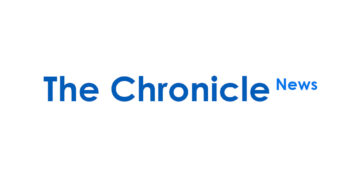OKLAHOMA CITY — A new report recommends state lawmakers pass legislation to create a voluntary statewide program whereby drivers are taxed per mile driven rather than at the gas pump.
After conducting a pilot program in which hundreds of Oklahomans tracked and reported their mileage to the Oklahoma Department of Transportation, a state task force recommended lawmakers pass legislation in 2025 to create a full-scale pay-per-mile program.
In the report issued last week, ODOT’s Road User Charge Task Force recommends the new program as a possible solution to declining fuel tax revenue due to vehicles becoming more fuel efficient and electric and hybrid cars becoming more popular.
ODOT spokesperson Bryce Boyer said the agency’s job was to present its research to the Oklahoma Legislature. What happens next is up to lawmakers.
“They could say, ‘This is great. We want to follow your recommendations step by step,’” he said. “They could say, ‘We actually want another pilot program, can we do this again?’ Or they could say, ‘This was great, thanks, but we’re going to look at something else now.’ It’s really up to them.”
If lawmakers adopt the recommendations, ODOT said the pay-per-mile program would not start until 2027 or later. The program would be voluntary, at least in the beginning.
Boyer said launching a widespread voluntary program would help ODOT streamline the process before any consideration is given to making the program mandatory.
As a result of legislation passed in 2021, ODOT formed the task force and launched the Fair Miles Oklahoma pilot program to explore alternative methods for transportation funding. Oklahoma’s 20-cent-per-gallon fuel tax is the state’s largest source of revenue for road and bridge maintenance and improvements.
The task force issued its findings in a 42-page report.
ODOT expects fuel tax revenue will start declining by 2030. The agency estimates that by 2050 fuel tax revenue will be 50% lower than current tax collections when adjusted for inflation.
That’s where the pay-per-mile idea comes in.
Under this system, motorists would be charged based on the number of miles they drive. The report indicates the state would have to work with other states to collect per-mile fees from out-of-state drivers.
All vehicles could be charged the same fees per mile or the state could implement a system in which heavier vehicles pay higher fees.
ODOT recruited 445 volunteers from 63 counties to participate in its Fair Miles pilot program to report their mileage for a six-month period starting in May.
About 56% of participants opted to report their mileage through a GPS-enabled device that took into account any out-of-state mileage. Other participants submitted photos of their odometer each month.
Sen. John Haste, R-Broken Arrow, who served on the task force, said the report is just the first step of many as state leaders consider various options to replace the fuel tax.
“While I am not for a mandate — and stated so in multiple meetings — of putting a device on any Oklahoman’s vehicle, this type of idea is very much a starting point to a much larger conversation that needs to be had,” Haste said in a statement.
ODOT sent each pilot program participant sample invoices showing how much they would owe through a pay-per-mile program and how those charges compared to fuel taxes.
The average monthly invoice was $10.40 based on a fee of 1 cent per mile.
“More than half of the participants felt a (pay per mile) system is fairer than the current fuel tax,” the report said.
As of last year, more than three dozen states had some involvement in a pay-per-mile pilot program, according to the report.
The task force also recommended ODOT enhance its public outreach to educate Oklahomans on the impact of declining transportation funding and how a pay-per-mile system would work.
In the most recently completed fiscal year, the state collected about $582 million in gas and diesel taxes. ODOT also pulls road and transportation funding from other sources.
Rep. Ronny Johns, R-Ada, who leads the House transportation committee, said he’s still reviewing the report. He expects lawmakers will have a better idea of their next steps once they hear from their constituents.
“The report just came out, and people are just now learning what the report says,” he said. “Then, I think we’ll start hearing from constituents to see what they think.”
Oklahoma Voice is part of States Newsroom, a nonprofit news network supported by grants and a coalition of donors as a 501c(3) public charity. Oklahoma Voice maintains editorial independence. Contact Editor Janelle Stecklein for questions: info@oklahomavoice.com. Follow Oklahoma Voice on Facebook and Twitter.
Want to reach a local audience and grow your business?
Our website is the perfect platform to connect with engaged readers in your local area.
Whether you're looking for banner ads, sponsored content, or custom promotions, we can tailor a package to meet your needs.
Contact us today to learn more about advertising opportunities!
CONTACT US NOW




